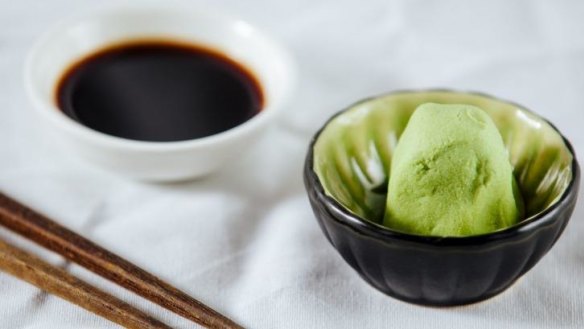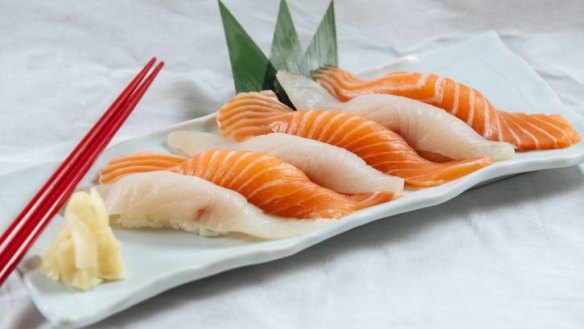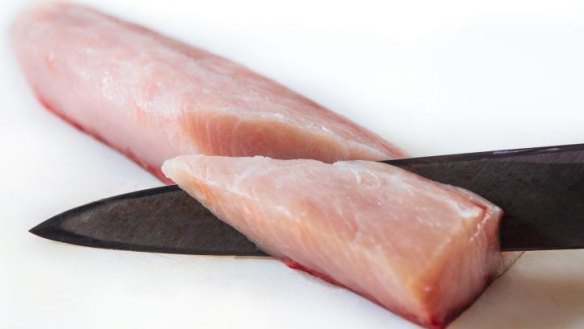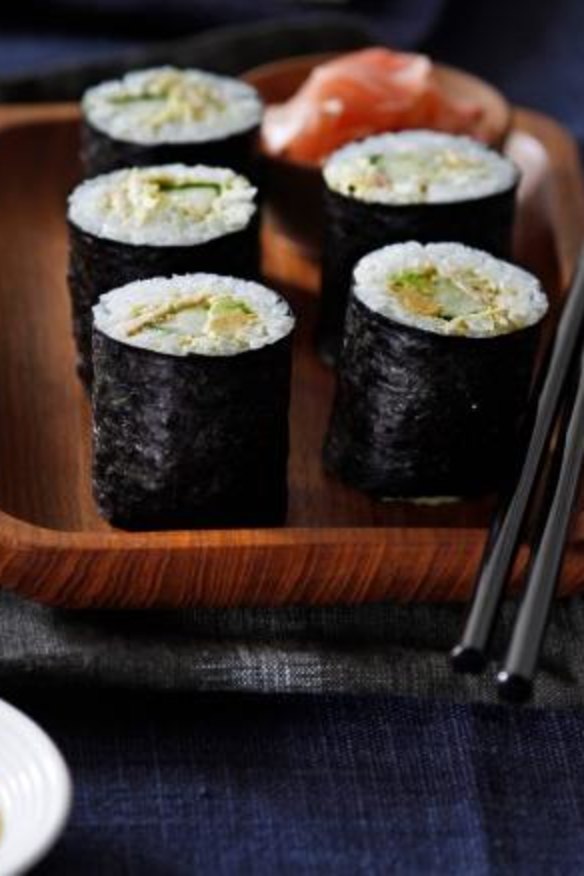How to eat sushi: a beginners' guide
Don't overpower the fine flavours of these Japanese foods, says our expert.

- Sashimi 101: tips and a recipe
- Recipe: Kingfish with sesame ponzu dressing
- How to make sushi at home
We've all done it at some point in our lives – ordered a couple of pieces of pristine sushi then proceeded to drench it in a salty hailing of soy, leaving it gastronomically bedraggled.
For a cuisine that is based on simplicity and delicate flavour profiles, it's a crime to obliterate its intentions.

First things first – sashimi is the raw fish (or meat), sushi is fish and rice. Now let's put down the soy bottle and learn how to eat it right.
Ditch the dunk
As mentioned, the big mistake people make when eating sushi is picking it up and dunking it wholesale in soy. The rice soaks it all up and then that's all you can taste. "The soy is there to complement the sushi vinegar of the rice, and the actual fish, and the wasabi coming through. It's not there to kill the flavour," says Kota Ogawa, the Japanese-born head chef from En Izakaya, in Balaclava, Melbourne. The proper way is to just tilt it, glance the fish into the soy and eat it in one bite.

Wipe on the wasabi
The habit of mixing a nub of that green wasabi into a little dish of soy is a popular one but Ogawa warns that fresh wasabi doesn't have the same brain-clamping kick, so mixing it with the sauce will kill its milder flavour. He recommends putting the wasabi directly on the fish, then dipping it lightly in the soy so every individual flavour mingles on your tongue.
Perfect match

In a nutshell, Ogawa recommends eating oily fish with soy and wasabi, while lighter, white fish like garfish or whiting work better with fresh grated ginger or ponzu (a Japanese citrus-based sauce). "The white fish doesn't have as much flavour so you want to bring out the flavour it has. Soy can be too heavy for it so you want to go with something lighter – ponzu really brings out white fish, or even just a hint of wasabi and lemon can work. Soy and freshly grated ginger really brings out the sweetness of calamari or cuttlefish. Shiso leaf, with that hint of citrus and mint, can really showcase the fish too." But he's keen to emphasise that "eating sushi is all about the actual fish itself, not the flavours on the side".
Eat in the right order
So you order a lavish sushi platter and it arrives in all its delicate, glowing beauty. What do you eat first? Ogawa suggests starting with sashimi first and using the rule of thumb of eating from light to dark, as lighter fish is less oily and won't coat your tongue in fat. Start with fish such as snapper or King George whiting before moving on to something slightly fattier like kingfish and salmon (as long as it's not a really fatty part of the salmon, like the belly) and maybe a blue or silver fish like mackerel. Finish off with a really rich, melt-in-your-mouth tuna. Use the white pickled ginger as a palate cleanser between fish.

After the sashimi, eat the maki rolls (the more common, rice-wrapped rolls) because they have multiple ingredients and are more complicated in your mouth. "Like any cuisine, start from simple to more heavy and complicated dishes," Ogawa says.
Sushi from the paddock
Sushi doesn't have to be fish – it can also be meat. Ogawa likes to sear a beautiful piece of wagyu and serve it with ponzu or even just plain salt to bring out the sweetness of the meat. "We serve it tataki which means it's seared on all four sides so the outside is nice and brown but the inside is still perfectly raw. We then serve that sashimi-style." As meat is not as delicate in flavour as fish, it can take punchier accompaniments such as grated daikon and yuzu (yuzu is a Japanese citrus fruit), or a yuzu and chilli paste.
Want to make sushi at home?
If you're going to try your hand at making sushi at home, Kota has a few pointers. First up, get the freshest fish you can find – and the sharpest knife you can safely put your hands on. "It doesn't need to be a big knife – a standard chef's or cook's knife will do." Cut the fish from top to bottom in one deft stroke. Don't saw it. And always cut the fish against the grain or it will be unpleasantly chewy and sinewy. Cutting against the grain keeps the sinew short and the texture melty.
Hit your local Japanese grocer for supplies like short-grain rice, or at least medium-grain rice. It has to be glutinous so it's nice and sticky. When it comes to decided what to put in your maki, Ogawa recommends restraint. "Don't pack everything but the kitchen sink in there – you'll end up with something gigantic and you won't know what you're eating. The key is to have a balance. Don't overpower any one ingredient with too much of another. Being Japanese food, you want it to be as simple as possible. I prefer just a single ingredient inside – just tuna or just cucumber – or sometimes both because the tuna is soft and the cucumber has the crunch. Just don't go into overkill – don't kill it with too much mayonnaise, just because you love mayonnaise.''
Be adventurous
Even though Japanese cooking is all about simplicity, Ogawa advises diners to be adventurous. 'We have kingfish and salmon sushi, but most people go for the salmon because they're not sure about the kingfish. A lot of places have different kinds of fish – try anago, which is a Japanese salt water eel. It might sound off-putting but if it's done well, it's really great.'
Oh, and ''it's fine to eat with your hands. It's easier. Hold a piece of sushi with three fingers – thumb and middle finger on either side, index finger on top – then give it a little dip and eat it in one mouthful.''
Restaurant reviews, news and the hottest openings served to your inbox.
Sign up